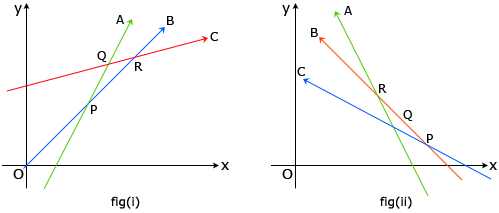Remember the following important points for the motion of freely falling bodies
- The slopes of tangents to the curve y = f(x) at the points lying in [a, b] on which f is strictly increasing are positive as shown in fig(i).
- The slopes of tangents to the curve y = f(x) at the points lying in [a, b] on which f is strictly decreasing are negative as shown in fig(ii).
- The slope of the tangent to the curve y = f(x) at x = c is zero if f '(c) = 0.
- If f(x) is strictly increasing (strictly decreasing), then
- If f(x) is strictly increasing (strictly decreasing), then f is also increasing (decreasing).
- If f(x) is an increasing (decreasing) function, then f(x) need not be strictly increasing (strictly decreasing).
- A function f is said to be strictly increasing (strictly decreasing) and increasing (decreasing) at x = c respectively, if f(x) is strictly increasing (strictly decreasing) and increasing (decreasing) in neighborhood of c.

– f(x) is strictly decreasing (strictly increasing).
Similarly if f(x) is increasing (decreasing), then
– f(x) is decreasing (increasing).
Ex: f(x) = [x] on R is increasing.
But it is not strictly increasing.